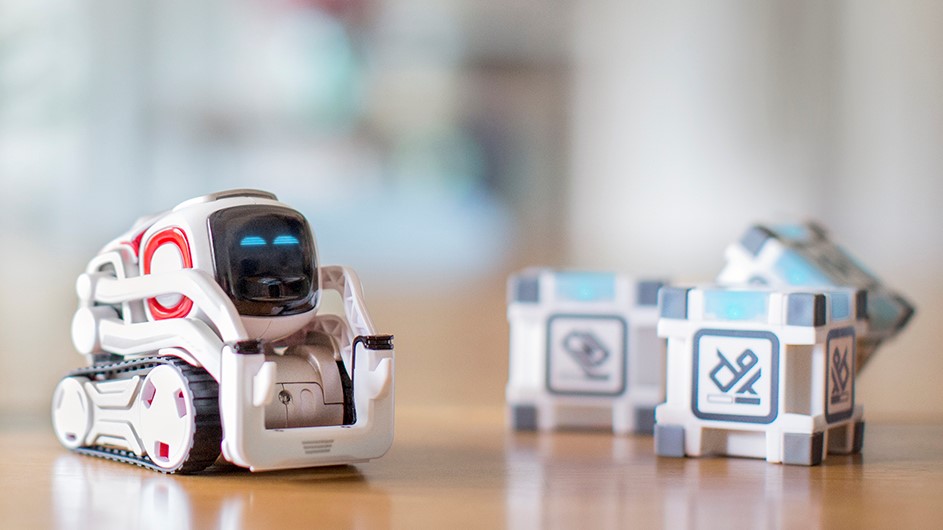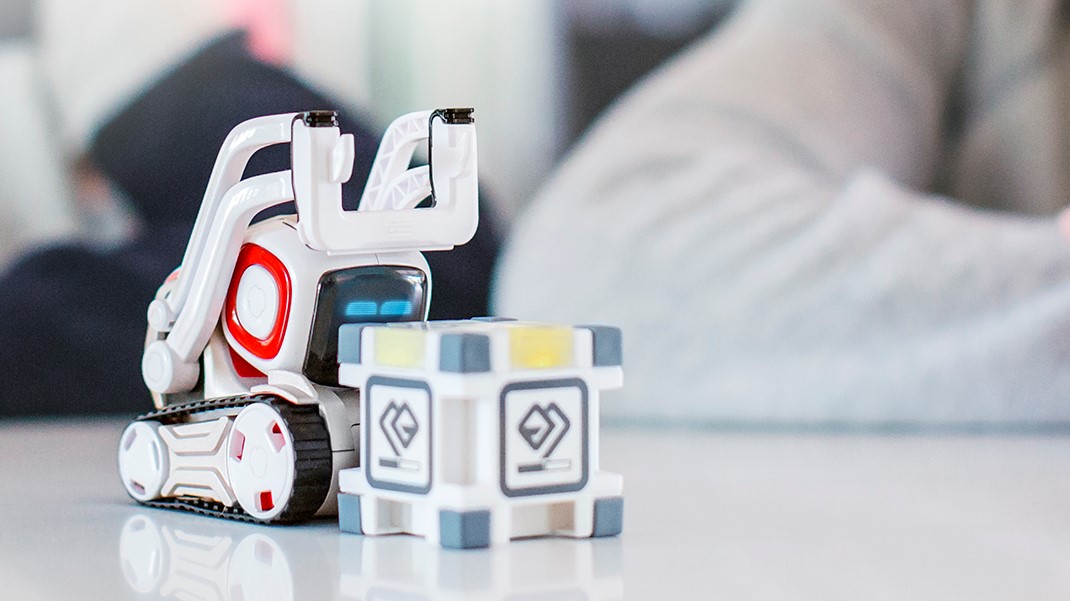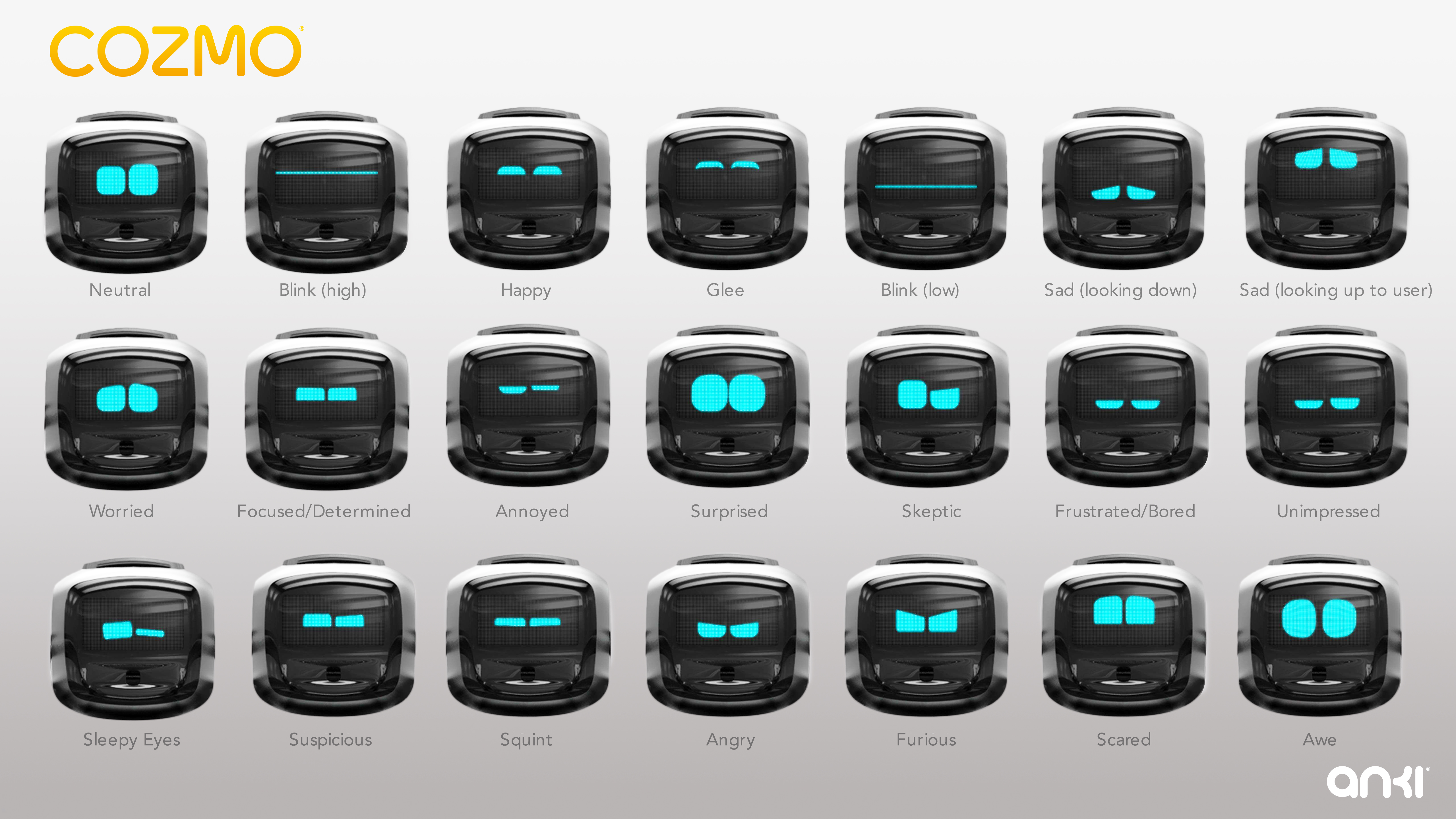
“This sounds kind of romantic, but from a character perspective, the way I think about it is that I’m not inventing the character, says Dei Gaztelumendi, character lead at Anki. “The character is there, and we are discovering it. We are unearthing it.”
Dei Gaztelumendi, a former character designer at Paramount Pictures, has spent the last four years discovering personalities for Anki’s friendly companion robots, including Cozmo and Vector. That might seem like a big leap, but Gaztelumendi explains that it was quite a natural progression.
He began his career illustrating children’s books before moving into animation, where he later specialized in character design. Anki reached out to him in 2015.
“The first task that they needed help with was trying to figure out Cosmo’s eyes,” he says. “They were struggling to create appealing eyes and expressions, and that was definitely in my area.”
For Gaztelumendi, the biggest difference between working at Paramount and Anki was moving from just focusing on the outward appearance of the characters to considering their inner workings – the emotional side, and their personality – which has become the core of his work.
Discovering a character
When Gaztelumendi is creating a character for Anki, the first step is to find out what the purpose of the robot will be, and who it will be a companion for.
“Getting that information from the company executives, from a character perspective, gives us the plot of the movie,” he explains. “And then it’s really about designing that character that we hope will fill that void on an emotional and companionship level.
Sign up for breaking news, reviews, opinion, top tech deals, and more.
“Suddenly when you think about it that way, there are right and wrong answers about how the character should be, how the personality should be,” he explains. “Something that is made for ages 5-10 for entertainment and fun will bring about very different answers than something like Vector, where it’s a little more adult and sci-fi enthusiast oriented. Those parameters are what begin to inform the early stages of the character.”
Even if their starting point is just a bundle of vague objectives, Gaztelumendi and his team can use that to come up with a bundle of traits that will evoke the right kind of feeling. He compares it to the core of a snowball that rolls downhill, growing as it goes.
At the same time, the character team can use their backgrounds in animation (and in Gaztelumendi’s case character design) to visualize their ideas. “Just little doodles of the character doing this, doing that, while trying to infuse it with all of the qualities from that checklist,” he says. “It sounds clichéd to say it, but a picture is worth 1,000 words.”
They can then show these images to the product team – with interesting results. “Suddenly you are no longer having a rational conversation about ‘Should it be a rascal, or should it be more like a critter’,” he says. “Suddenly you have people going ‘Aww!’ or people going ‘Ooh!’ – and those actually become even more valuable to our team.
“We’re engineers of the emotional kind, I guess. Based on those reactions, we’ll continue to fine-tune the character, the behaviors, the antics, the expressions, and eventually these will inform the product itself with all its facets, industrial design, animation, audio. Those are the initial stages of designing a character robot.”
Making it real
Creating a character is one thing, but making people grow attached to it is something else. For Gaztelumendi, the most important part of creating a believable character is ensuring its behaviour is consistent and coherent.
“Just like a person in your life - whether it’s a relative or a friend – there is a certain built-in coherence. If you go out for coffee with someone that is very close to you and they suddenly do something that is incoherent with how they usually behave, you will notice right away, and you’ll be likely a little freaked out – what’s going on? Is everything OK?”
As humans, we’re very sensitive to anything that’s out of character – but if behaviour is consistent, we can become very attached.
“With a robot, we hope to bring about a sense of familiarity, and ideally ultimately bonding, that we believe can only happen if you have a solid sense that you know this character. That you know this little guy.
Whether it’s with Cozmo or with Vector, I think that comes from continuously getting coherent demonstrations of that character. Whether it’s sad or happy doesn’t matter – it just behaves in a certain way.”
Once the pre-production work is done, most of Gaztelumendi’s work as a character director involves maintaining that consistency, working with other teams including animation and audio. “At that point I’m not working on producing that many assets,” he says. “Mostly what I’m watchful for is coherence of character. I would say that’s the key thing to do well.”
A sense of presence
So why is character so important for Anki’s little bots?
“What we have found, and it’s what I believe also, is that character and personality is the thing that elevates us from being a mere device,” Gaztelumendi says. “It brings about this sense of presence – like ‘He’s over there, doing his thing!”
Even if reviews of the robots are negative, Gaztelumendi relishes them when they refer to Cozmo or Vector as ‘he’. “From a character perspective, whenever we read someone referring to one of our robots – Cozmo or Vector – as a being, not as an ‘it’, that indicates to us that we’re on that other tier, and then more things are possible, such as companionship and our robot having an emotional effect on the users. Those things, we feel, wouldn’t be possible without any character or personality.”

After all his years working with Anki creating characters that users can connect with, Gaztelumendi’s favorite project is still the one he was initially hired for: creating Cozmo’s expressive eyes.
“Maybe I’m just biased because it was my first project at Anki when I first became involved, but I do have a special place for that challenge,” he says.
"There’s a character who fills, in a certain way, the goal of this robot and we’re chiselling the marble away to find it. And I feel like designing the eyes was almost that same exercise. The moment I felt I succeeded, I was looking into the eyes of the robot that is now Cozmo. I was there tweaking and tweaking, and eventually I got there and I said ‘This is him’. We were looking at each other.”

Cat is TechRadar's Homes Editor specializing in kitchen appliances and smart home technology. She's been a tech journalist for 15 years, having worked on print magazines including PC Plus and PC Format, and is a Speciality Coffee Association (SCA) certified barista. Whether you want to invest in some smart lights or pick up a new espresso machine, she's the right person to help.

